The history of the Amsterdam Pipe Museum
Author:
Benedict Goes
Original Title:
De geschiedenis van het Amsterdam Pipe Museum
Publication Year:
2021
Publisher:
Amsterdam Pipe Museum (Stichting Pijpenkabinet)
General
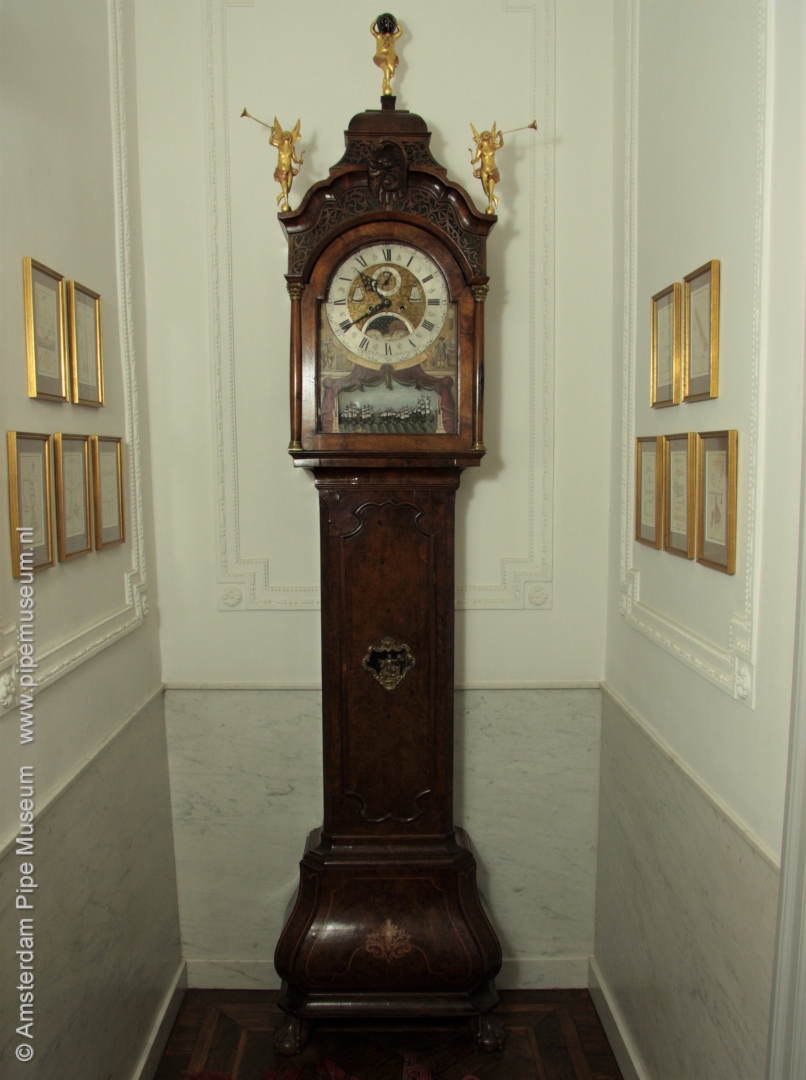
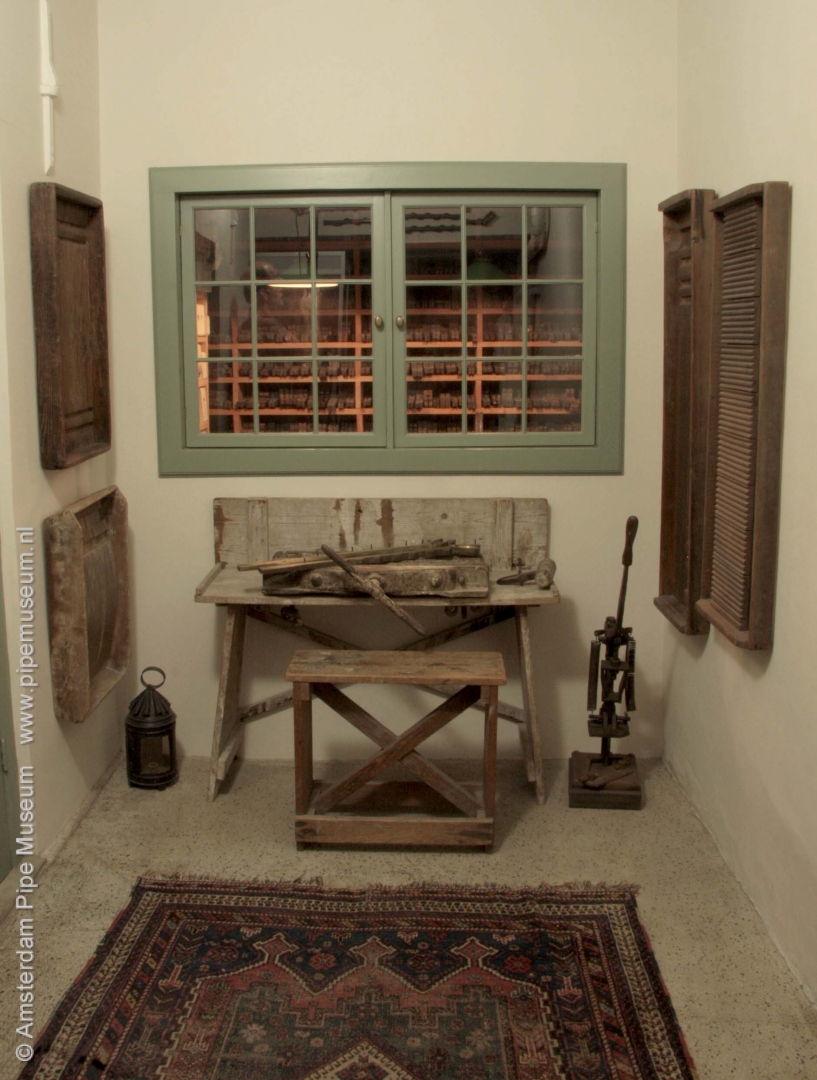
In 1994 the radical decision was made to move to Amsterdam as the best location for a specialized pipe museum. A suitable building was found on one of the main canals in the centre. After more than three hundred years, the canal house was in need of a thorough restoration. The result was astonishing: the interior radiated allure and history again. Marble in the hallway was repaired, stucco of walls and ceilings meticulously restored, an original beamed ceiling restored in oxblood red colour, and antique oak parquet floors re-laid.
This created a double attraction: an open canal house with a unique collection, brought together as a true collector's cabinet. The tastefully chosen furniture such as cabinets, Venetian chandelier and long case clock enhance the atmosphere of the house. The charm of the museum adds to the special welcome: every visitor is guided personally. The collection objective had since been extended to pipes of all materials, including the meerschaum and wood, supplemented with ethnographic examples.
It was a great boon for the Pijpenkabinet that the basement could be used as a shop, initially under the name Smokiana pipeshop. With its own entrance and a shop window on the street, the shop could also function separately and even have longer opening hours than the museum. Due to this form of cultural entrepreneurship, the Pijpenkabinet was far ahead of most museums - the museum world sometimes looked at the shop function with a skewed eye and some suspicion. Nevertheless, this proved to be the right formula, partly due to the addition assorted modern smoking pipes. Not only did this trigger an influx of pipe smokers, it met an increasing need as the briar pipe disappeared from generalist tobacco shops.
Exhibition in Amsterdam
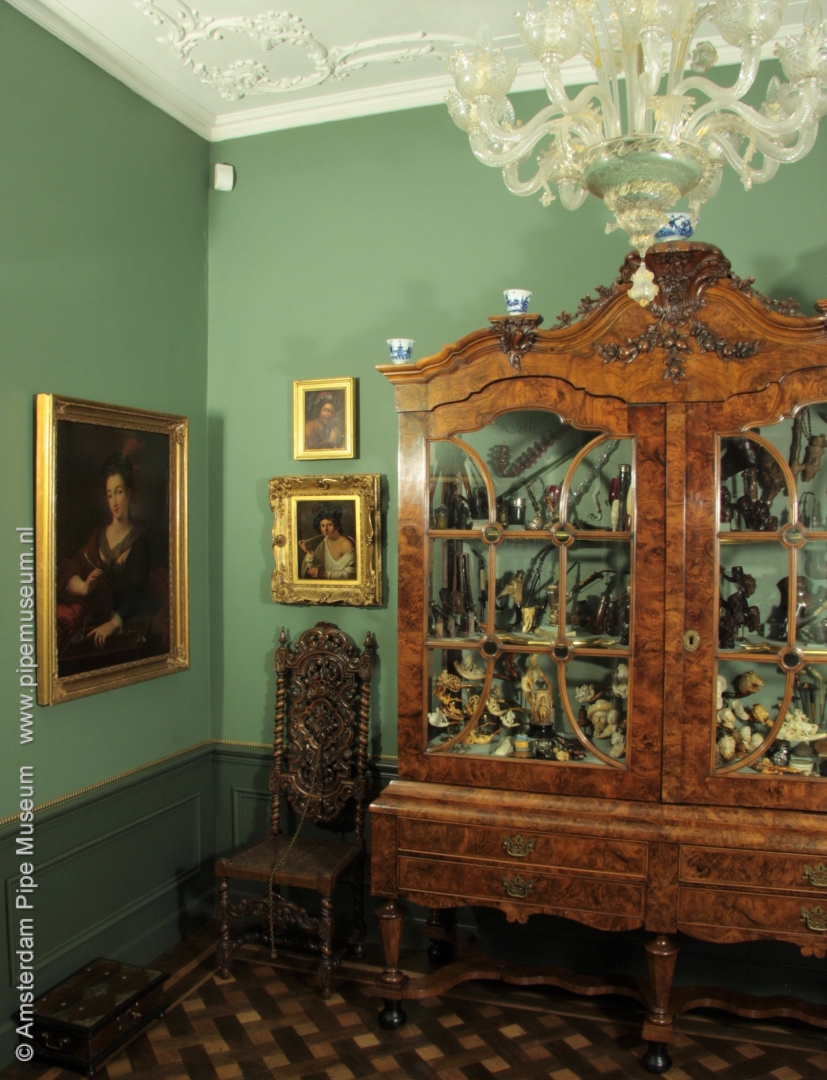
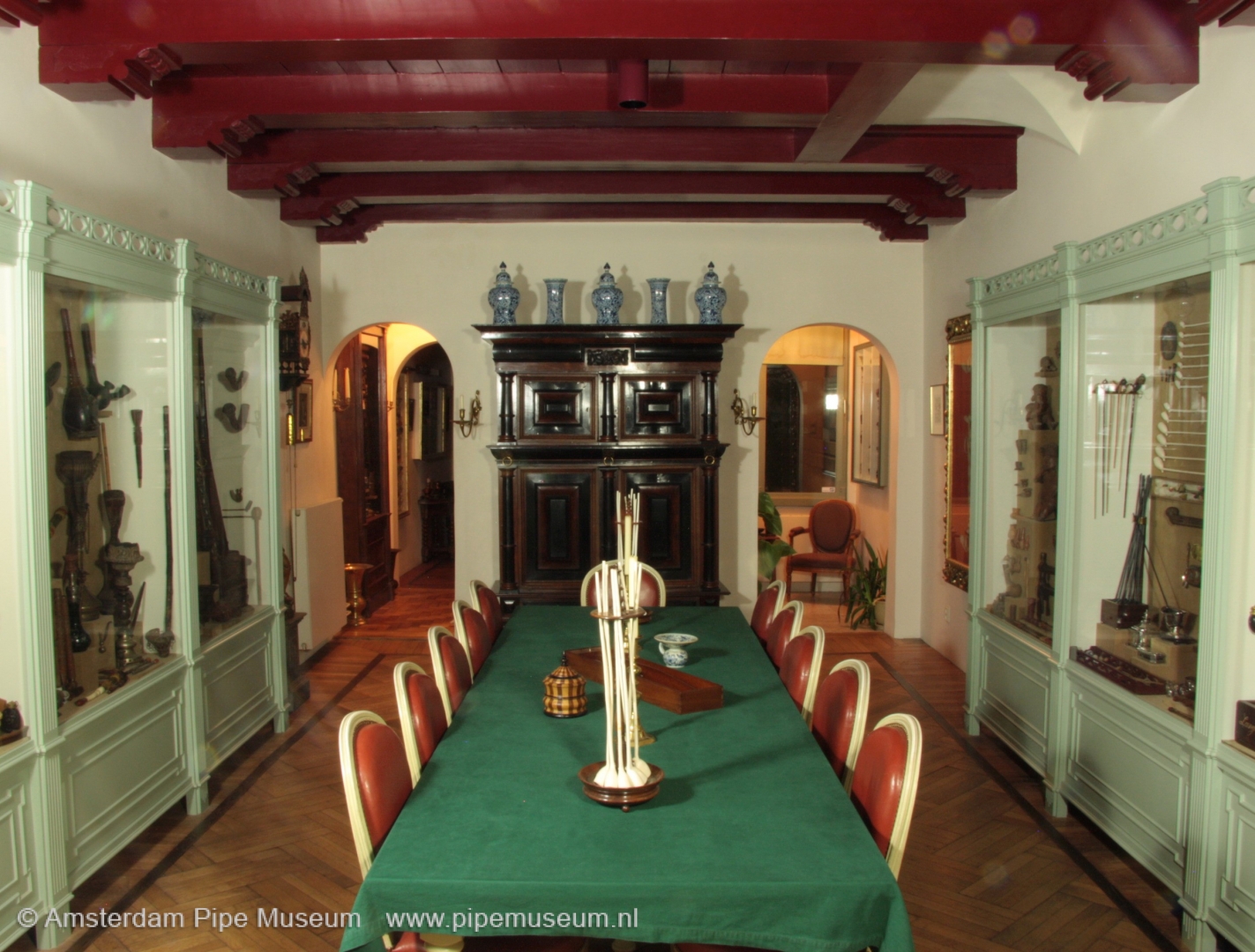
Like the previous display in the Regents’ Room in Leiden, the pipe collection in Amsterdam has also been incorporated into a historic interior. However, the exhibition area is much larger, with a multiplied number of showcases. This was necessary show the full breadth of the enlarged collection. A thematic exhibition was chosen rather than an educational one, because the building was too small for that. Thanks to a clever display, over two thousand objects could be placed in the permanent exhibition.
A double showcase wall was designed for the main hall, finished in celadon green. Each of ten large display windows show an important cultural or regional aspect of the pipe. The themes include pre-Columbian America, the Dutch smoking culture (including accessories from the rich eighteenth century), early meerschaum pipes, porcelain figural pipes, water pipes and ceremonial pipes from Cameroon. In the centre of the room, a table with twelve leather chairs can accommodate groups of visitors by appointment. Interested visitors can get a tour of the collection while enjoying a cup of coffee or tea. Pipe smoker clubs also use this facility and can light their pipes.
In the front room, a fine eighteenth-century cabinet contains the most astonishing curiosities in the field of smoking: artfully made pipes of glass, deer horn, shell and agate, to name some unexpected materials. More than a hundred hand-painted German porcelain pipe bowls can also be seen in this room looking on the canal. Built-in display cases in the hallway and on the landing show the sub-collections of Chinese opium pipes and tobacco pipes from the Far East. The conservatory with a courtyard view is reserved for the handmade pipes from Cameroon, Ghana and Ivory Coast. In a separate room in the secret annex, four showcases are dedicated to the clay pipe, both the archaeological finds and the nineteenth-century pipes with their entertaining designs. This room revives the atmosphere and super-specialization of the old Leiden museum.
Collecting in Amsterdam
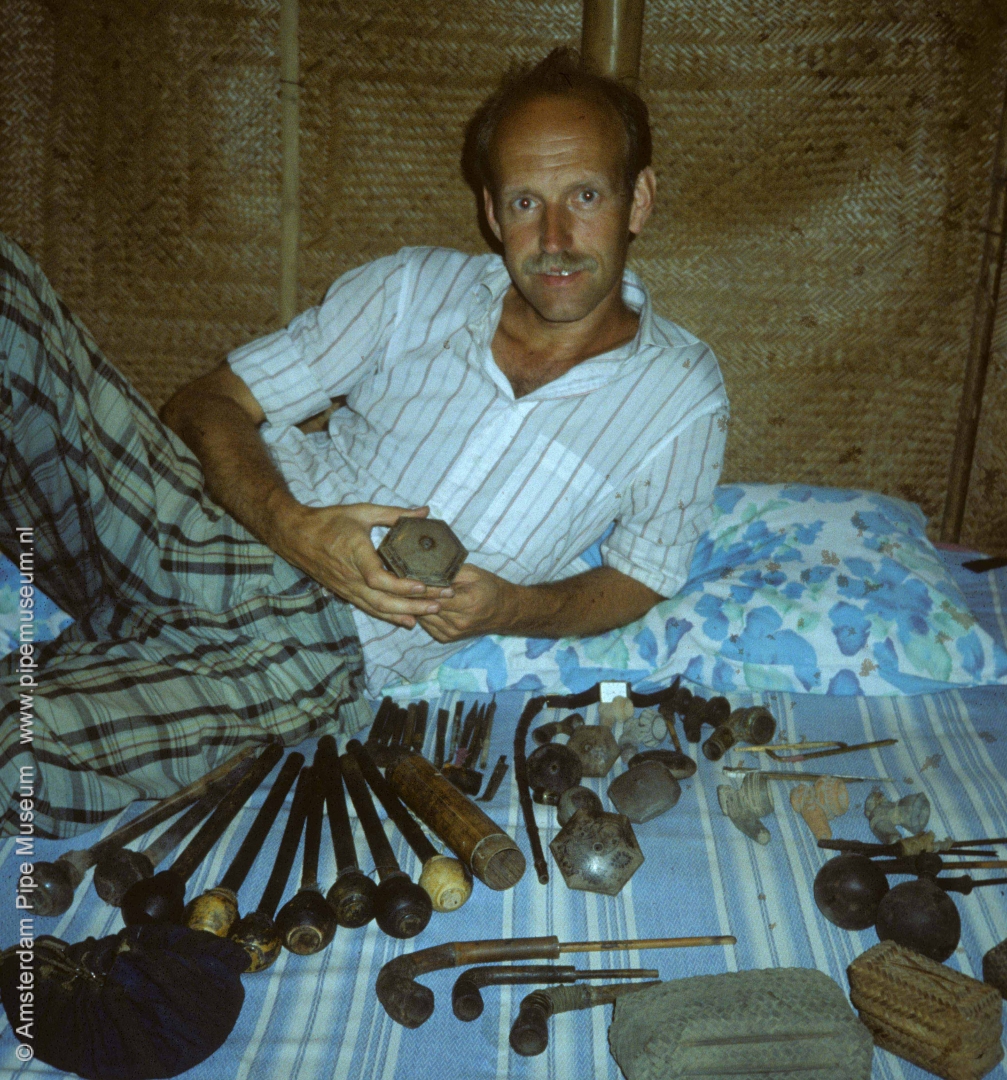
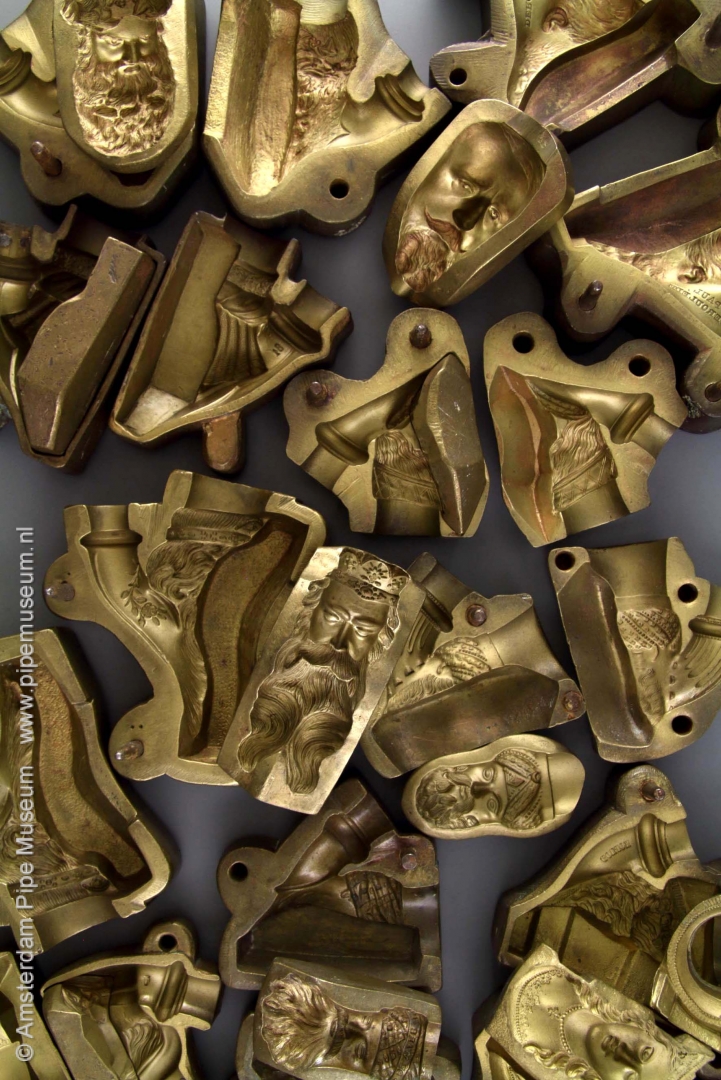
In the previous period, the collection area was already international, but still focused on ceramics. Since the move to Amsterdam in 1995, the collection area was expanded: smoking pipes from all cultures made of any material. Catching up in this area was possible because many private collections - and even museum collections - came onto the market during that period. When private individuals offer a collection, they usually like to get rid of everything in one sale. Afterwards comes the Pijpenkabinet’s selection process, sometimes with the result that only a limited percentage is retained for the museum; the most interesting part, of course.
At auctions, a choice must be made quickly on the spot, initially on quality and cultural value, then in relation to the price. Curator Don Duco is able to assess these factors quickly due to his solid expertise and knowledge of the market. In the period 2000-2005 in particular, numerous auctions took place, which enabled the Amsterdam museum to purchase a lot of material; in several cases pipes that had not been traded for half a century or more.
For the Pijpenkabinet, the provenance or pedigree is part of the object’s value. Famous collections thus became represented in the museum, including corporate collections of Niemeijer, Dunhill, Wills & Co, Austria Tabak and Seita. In addition, we hold parts of private collections that never sought publicity but were known in experts circles. The article on Collectors and their Passion on this website tells more about the sources that the Pijpenkabinet collection has drawn from.
Due to the closure of countless museum collections, also in the Netherlands (Utrecht, Kampen, Gouda, Groningen), it seems that the Pijpenkabinet stands alone as guardian of the pipe's heritage. At the same time, it can be concluded that the Pijpenkabinet collection has improved in quality to such an extent that it reached the top on a European scale. The combination of collection and documentation is completely unique within the theme of pipes and tobacco. The fellow museums were and are purely aimed at public visits, but do not conduct research and often do not even have an inventory.
Research function
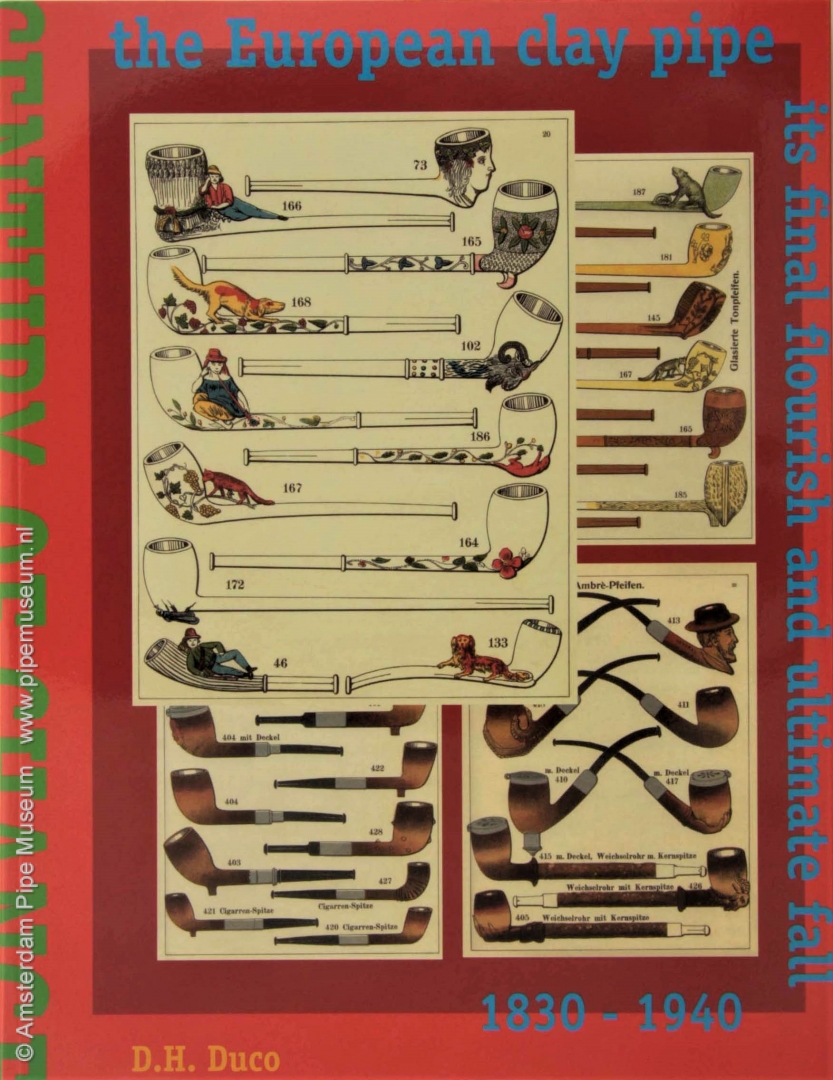
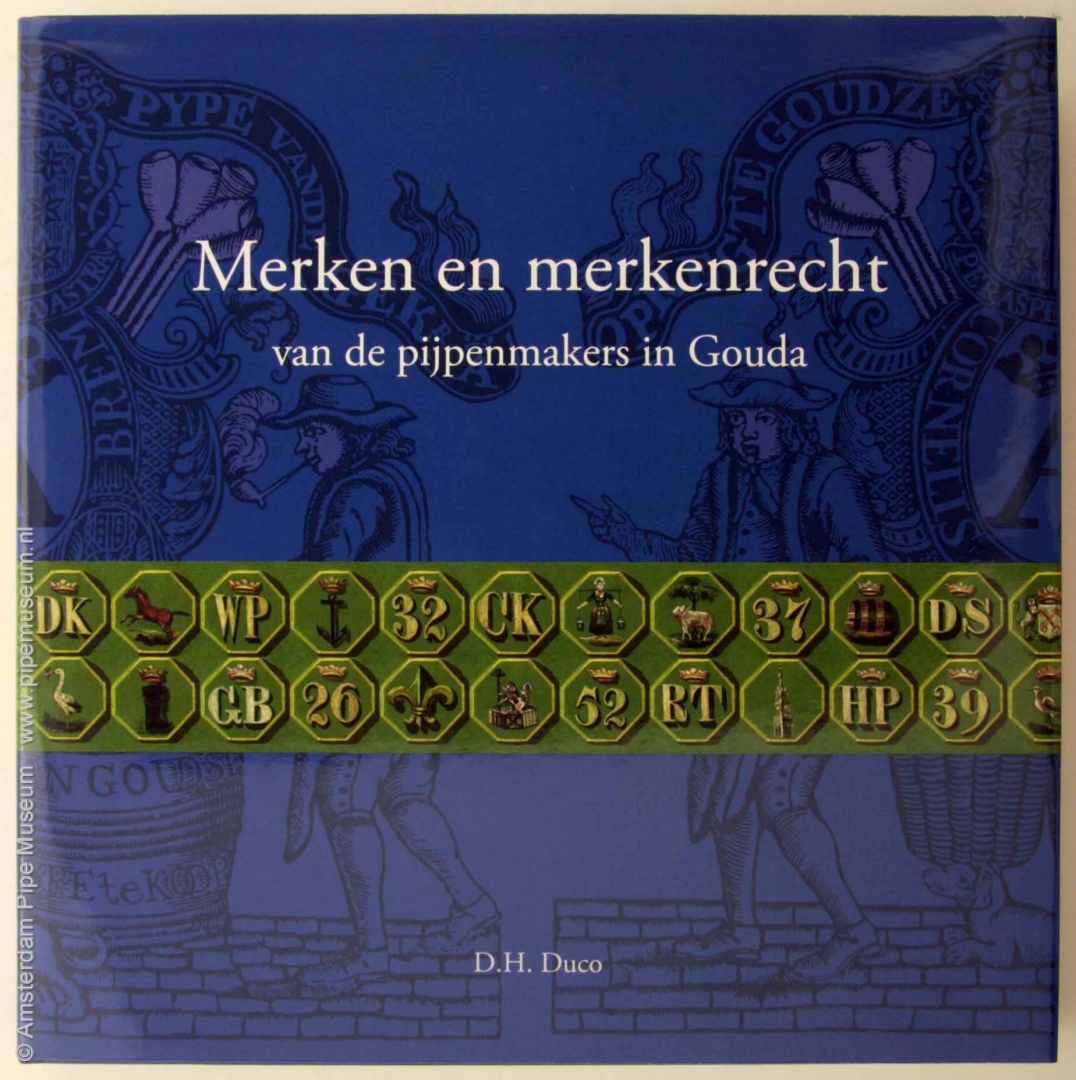
Logically, the expansion of the collection area also broadened our research. Since 2000, the Pijpenkabinet has mainly expressed its new expertise in articles on the web. For example, publications have appeared on a range of topics such as Ashanti pipes, the iconography of tobacco packaging, system pipes, wages in the pipe-making industry, corncob pipes and the meerschaum pipe.
A big step outside the traditional research area was the publication of the book Opium & Opiumschuiven, a source book as a result of renewed study in our own collection. The basis for the opium collection was laid in 1994 during a sabbatical by Don Duco in Southeast Asia. Dozens of books from the famous Boudewijn Büch's estate were added to the museum library, giving an extra stimulus to the research.
Archaeological research was given a significant boost by the Malta Convention, which made research and publication mandatory for archaeologists. The number of excavations rose explosively, as did the need for specialist materials research. The Pijpenkabinet was presented with thousands of pipes, consulted not only to identify age and origin, but more importantly for the well-founded interpretation of the use and social position of the pipe in the relevant time and social layer.
Traditional research into the clay pipe continued as usual, resulting in a ground-breaking book on the European development of the design of the clay pipe in the nineteenth century, entitled Century of Change; the European Clay Pipe, its final Flourish and ultimate Fall. The multi-year project on the history of the pipe and pottery factory Goedewaagen was completed in three parts: the family history, the pipe industry and the company and product history. The latter established Duco's name in the circle of ceramic experts.
Finally, there was the renewed and greatly expanded version of the pipe mark book entitled Marks and Ordinances of the Pipe Makers in Gouda. This voluminous book is the crowning glory of Duco's work, a standard work that could be realized after more than twenty years of additional research, partly by digitizing the enormous databases of makers and marks that had been collected and processed since 1969.
Public activities
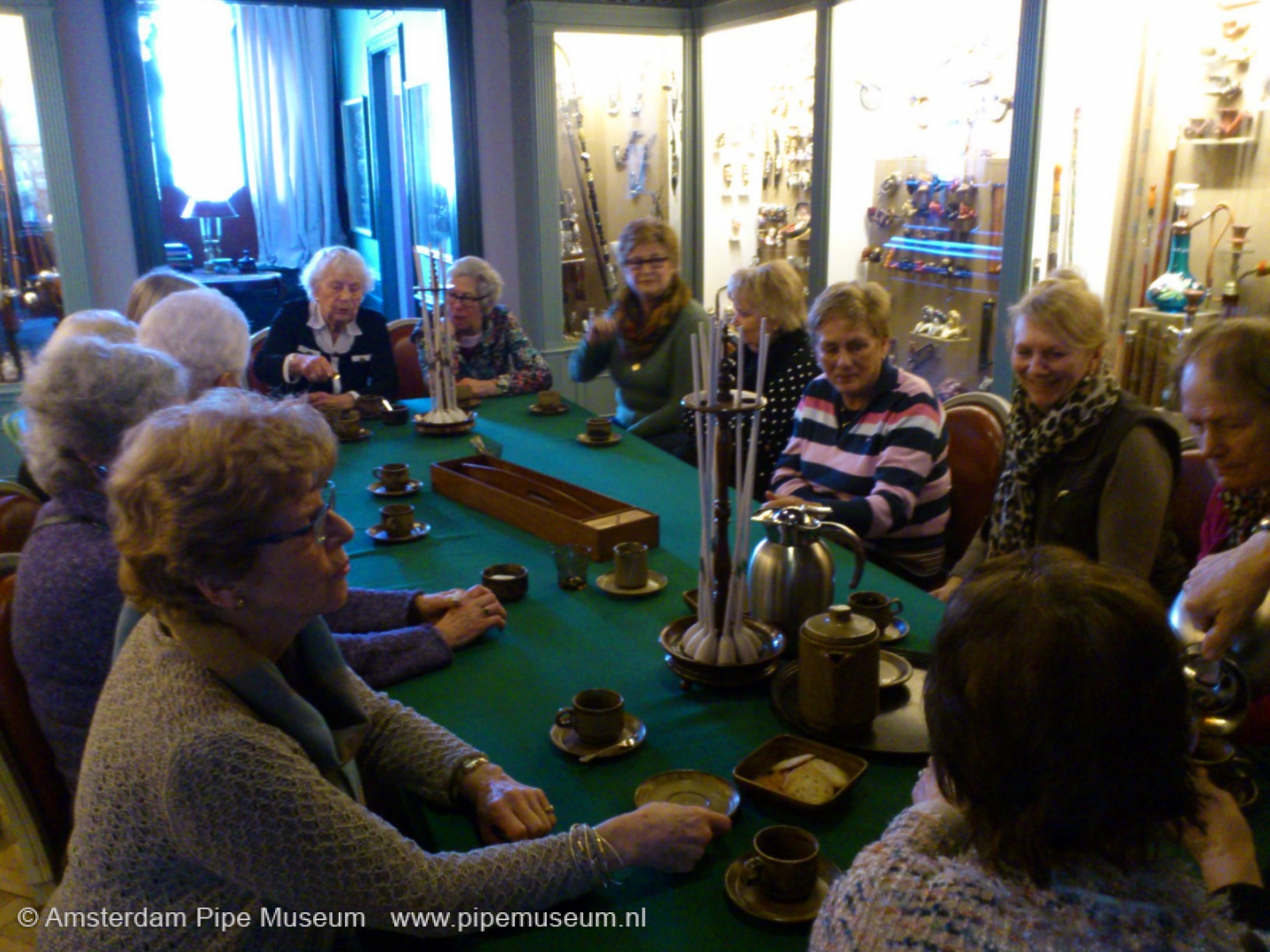

In the 21st century, the website has proven to be by far the museum’s most important public service. Established in 2000, the Pijpenkabinet website grew over a ten-year period into an extensive source of information with hundreds of pages and more than 2,000 illustrations. In line with the worldwide web, the website has always been completely bilingual. However, the information remained fairly flat in the sense that it was a series of digital brochures, articles and pictures with a chat. Visitor numbers increased to over 50,000 per year, proving the need for information about the culture of pipe smoking. The electronic Pijpenkabinet Newsletter was the means of communication to the target group for support.
In 2004 the Netherlands Open Air Museum in Arnhem was interested in furnishing a room with smoking pipes for a period of ten years. Amongst two hundred special pipes from the Amsterdam museum, the visitor could comfortably sit and watch a film in which the curator tells about the remarkable backgrounds of some special pieces. This created an outpost at the other side of the country.
The Pijpenkabinet’s initiative to publish a joint brochure with all museums for pipes and tobacco in the Netherlands was enthusiastically received. It was the first form of simple collaboration between the Dutch pipe and tobacco collections, promoting visits by peer referral. After a few years, however, three of the nine museums closed, which diluted the concept. This turned out to be a symptom of a phenomenon that was also recognizable abroad: the culture of smoking was no longer in demand.
Museum visits in the Amsterdam phase stayed unexpectedly behind expectations. Group visits by Dutch target groups, from smoking clubs to housewives, were substantial in addition to the motivated foreign tourist. However, as the discussion surrounding the smoking ban became more intense and less subtle, museum visits declined. The Pijpenkabinet responded by temporarily not seeking publicity and working behind the scenes on collection and research.
In order to respond to the social fact that pipe smokers are disappearing from the street, the Pijpenkabinet has developed two initiatives. With a pipe smoking course, a group of novice and aspiring pipe smokers is initiated every month in the tricks of enjoying a pipe. This unique service appears to meet a need, especially among young people up to the age of 35. The Amsterdams Pijprokers Genootschap (Amsterdam Pipe Smokers Society) was also founded in 2000. By making the social and cultural aspect of pipe smoking visible, the difference between cigarette addiction and savouring smoking a pipe was demonstrated and propagated.